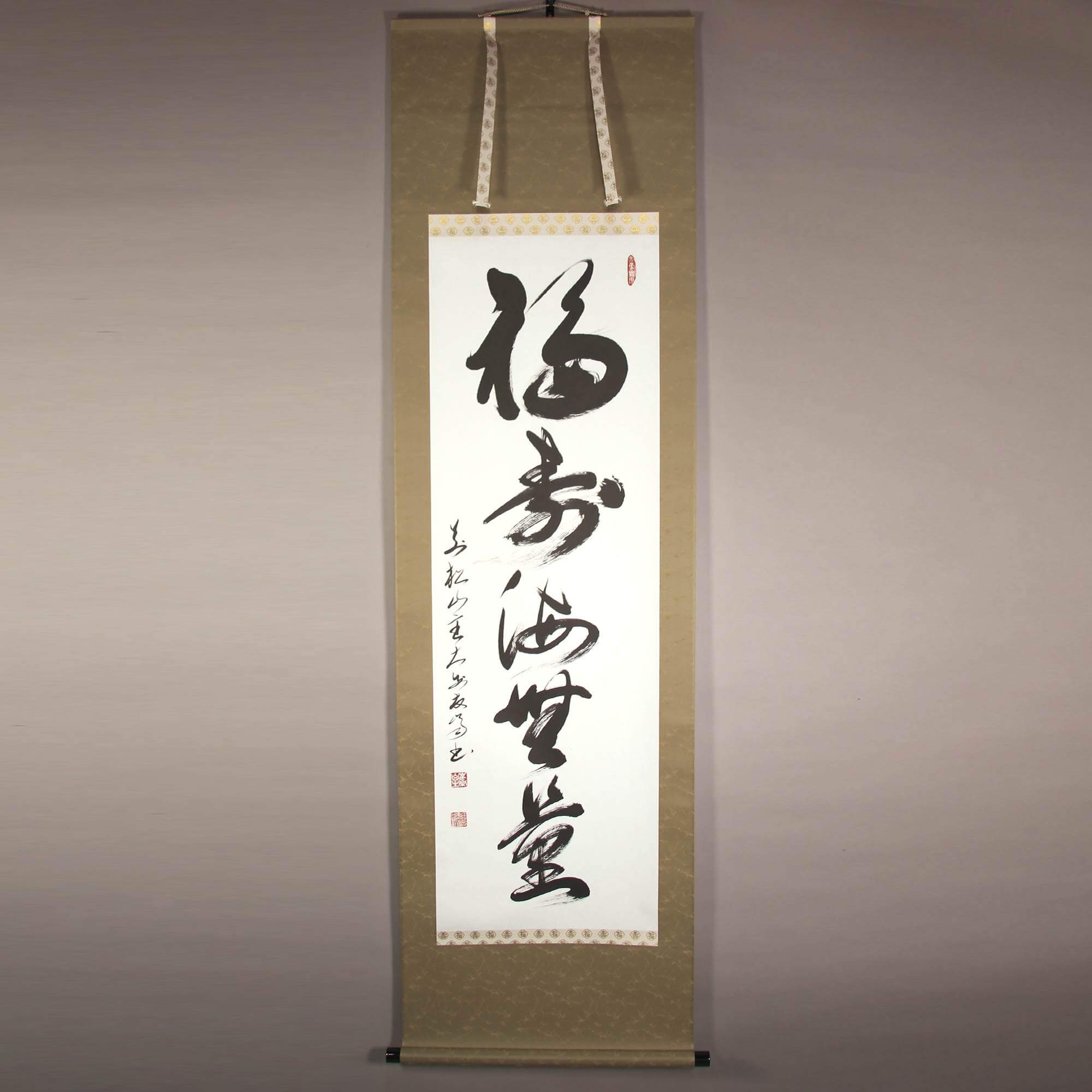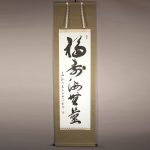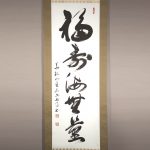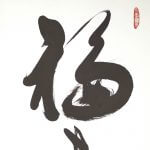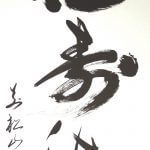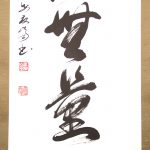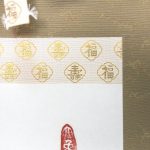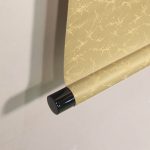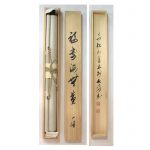Products Lineup
News / Blog
Other Menus
Kakejiku Hanging Scroll: Calligraphy: Fukuju-kai-muryou / Yuuhou Takahashi - Fortune and Happiness Are Immeasurable Like the Ocean
- Product ID
- 0188
- Name
- Yuuhou Takahashi
- Profile
The chief priest at the Daianzen-ji temple in Fukui pref.
1948
Born in Fukui city, Japan
1970
Graduated Kyoto Hanazono University (Major: Buddhism)
Joined and practiced asceticism at the Kaisei-ji temple in Hyogo for 6 years1989
Appointed as the chief priest at the Daianzen-ji temple in Fukui
2008
Exhibition at the Takumi museum in JR Gifu Station
Exhibition at the art gallery in Inoue department in Nagano2011
Opened a gallery in the Daianzen-ji temple
Also appointed as the chief priest at the Housyou-ji temple in Ishikawa
Exhibition at the “Gallery Metanoia” in Paris, France2014
Performed at the Sarah Lawrence College in NY, USA
- Size
- 600mm x 1920mm
- Roller End Material
Wood coated with black "urushi" (lacquer)- Material of the Work
- Japanese paper
- Price
- JPY 80,000
- Stock Condition
- In stock
- Payment: Click the Paypal Mark
- Duty and Taxes
Import duty and taxes are beyond our control and may apply to your shipment. Please noted that these fees are the responsibility of the buyer.
- Description
Yuuhou is a Zen priest, famous for his sermons which are simple, fun and unique so that people can easily understand them. He serves as the chief priest at 2 Zen temples: Daianzen-ji temple and Housyou-ji temple. He has been passionate about introducing Zen meditation, Bokuseki (calligraphy, especially of Zen priests) and Zen art. He has held many exhibitions, both domestically and internationally. He has lots of fun with his calligraphy and Zen art.
This piece is a calligraphic work of “Fukuju-kai-muryou” by Yuuhou Takahashi. The phrase means “fortune and happiness are immeasurable like the ocean.” His lively writing is very attractive and refined. It is very interesting that the Chinese characters of “fukuju (福壽)” are woven in *ichimonji fabric as its pattern.
*Fabric attached above and below a main artwork on a kakejiku (hanging scroll). Since ichimonji occupies an important place on a kakejiku, high quality fabric such as gold and silver brocade is used.

